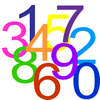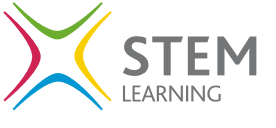Cookie Consent
We use cookies to help provide a better website experience for you, and help us to understand how people use our website. Our partners will also collect data and use cookies for ad personalisation and measurement.
Clicking "Accept" will allow us and our partners to use cookies, learn more in our cookie policy or to change your cookie preferences, click "Manage".
To find out more about cookies and the types of cookies we are setting please visit our cookie policy .
If you'd prefer that certain types of cookie are not saved on your browser when visiting our website, use the toggles below to adjust those preferences and click "Save choices".

Strictly Necessary
These cookies are necessary for the website to function and without them you would not be able to reliably use the website. For example, logging into your account or completing forms.
Analytics Cookies
A series of cookies that collect anonymised data on how users interact with our website. This anonymous data helps us improve the website with a focus on its users, for example, ensuring the most popular content is easier to access.
View associated providers +
Marketing Cookies
These cookies track your online activity to help advertisers deliver more relevant and personalised advertising or to limit how many times you see an ad. These cookies can share that information with other organisations or advertisers.

Become a Problem-solving School
Or search by topic
Number and algebra.
- Properties of numbers
- Place value and the number system
- Calculations and numerical methods
- Fractions, decimals, percentages, ratio and proportion
- Patterns, sequences and structure
- Coordinates, functions and graphs
- Algebraic expressions, equations and formulae
Geometry and measure
- Measuring and calculating with units
- Angles, polygons, and geometrical proof
- 3D geometry, shape and space
- Transformations and constructions
- Pythagoras and trigonometry
- Vectors and matrices
Probability and statistics
- Handling, processing and representing data
- Probability
Working mathematically
- Thinking mathematically
- Mathematical mindsets
Advanced mathematics
- Decision mathematics and combinatorics
- Advanced probability and statistics
For younger learners
- Early years foundation stage
Addition and Subtraction KS1
This collection is one of our Primary Curriculum collections - tasks that are grouped by topic.
Pairs of Numbers
The add and take-away path
What was in the Box?
Doing and undoing
How do you see it?
Here are some short problems for you to try. Talk to your friends about how you work them out.
Two Spinners
What Could It Be?
Unit Differences
Dicey Addition

Arranging Additions and Sorting Subtractions
Subtraction Slip
One Big Triangle
Make one big triangle so the numbers that touch on the small triangles add to 10.
Equivalent Pairs
Butterfly Flowers
Can you find two butterflies to go on each flower so that the numbers on each pair of butterflies adds to the number on their flower?

This project challenges you to work out the number of cubes hidden under a cloth. What questions would you like to ask?
What's in a Name?
Cuisenaire Counting
Number Balance
Can you hang weights in the right place to make the the number balance balanced?
Domino Sorting
Number Lines
Strike it Out
Use your addition and subtraction skills, combined with some strategic thinking, to beat your partner at this game.
Sort them out (1)
Sitting round the party tables.
Jumping squares
Birthday cakes.
Heads and Feet
Ladybirds in the garden.
Eggs in Baskets
Secret Number
Find the Difference
Number Round Up
The brown family.
The Tall Tower


IMAGES
VIDEO